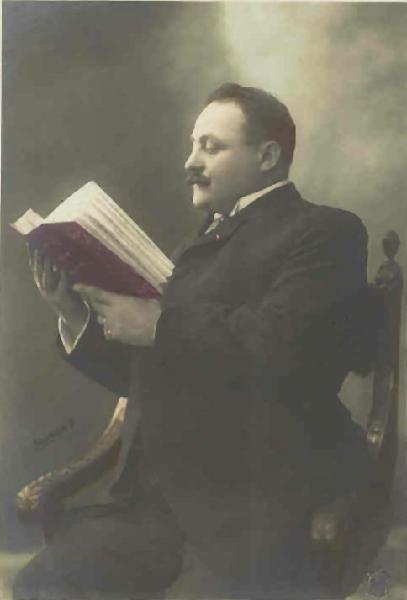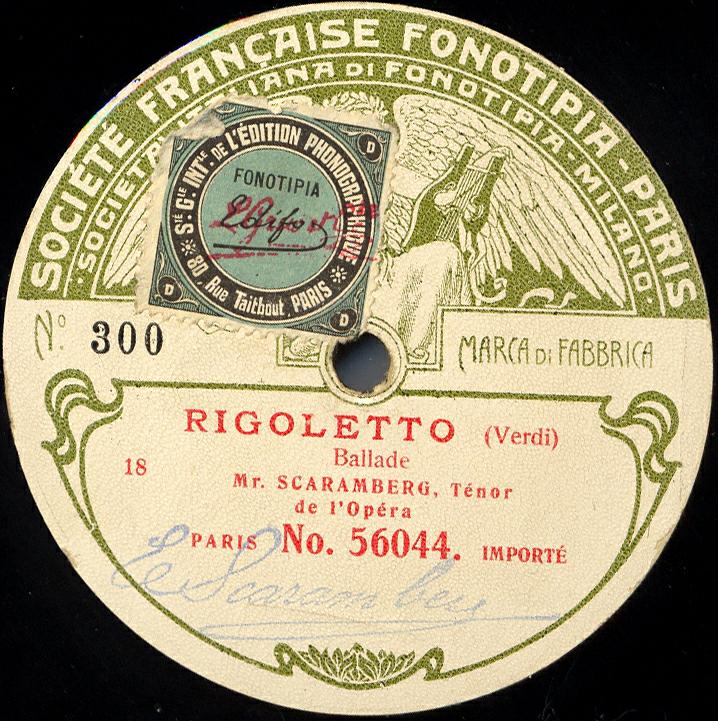Émile Scaramberg
26 April 1863 Besançon – 26 February 1938 Besançon
In RA format
In RA format
Scaramberg got a thorough tenor training in Besançon and in Paris until 1877, but before
making anything of it, he served in the army, and became a horn blower in a military band! Only after further studies, again in
Paris, he finally decided to try his luck as a tenor, and made his debut at the Opéra-Comique in April 1893, in Richard
Coeur-de-Lion.
He stayed at the Opéra-Comique for two years, then went on to Nantes, Nice, Marseille, Bordeaux and Vichy, and
eventually to Lyon, where he caused a sensation as Werther. Guest appearances in that period took him to Monte Carlo (1894 as
Turiddu, he was unsuccessful), Moscow, Covent Garden (1897: Roméo et Juliette, L'attaque du moulin, Les huguenots; he was
no success at all), Antwerp (1897 as Tannhäuser), Monnaie in Brussels (1898/99 in De Herbergsprinses by Jan Blockx).
In 1903, he made his debut at the Paris Opéra (as Lohengrin), where he stayed until 1907 – the year when he
suddenly lost his voice (other sources speak of a stage accident), and returned to Besançon to teach voice.
His repertory also included Duca, Faust, Don Ottavio, Radamès, Shahabarim (Salammbô by Reyer), Chevalier danois (Armide by
Gluck), Bar-Kokeba (Fils de l'étoile by Erlanger).
Although official documents as well as his own signature leave no shade of doubt that his name was Scaramberg, the misspelling
"Scaremberg" is widespread enough that even the lane supposed to bear his name in his native Besançon is called "rue
Émile Scaremberg".
Reference 1: Preiser LP liner notes, reference 2: Kutsch & Riemens
I wish to thank Serge Escalaïs for the label.
I wish to thank Richard J Venezia for the recording (Roméo et Juliette).
I wish to thank Christian Torrent for the picture.
Go Home
|

